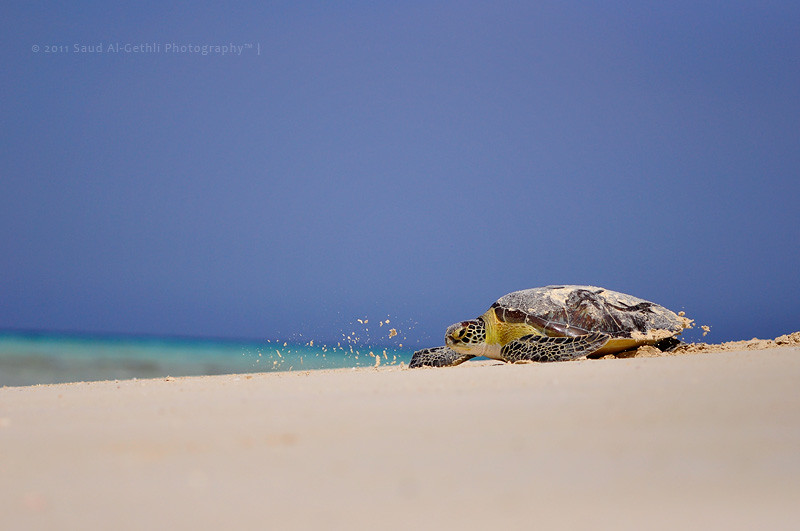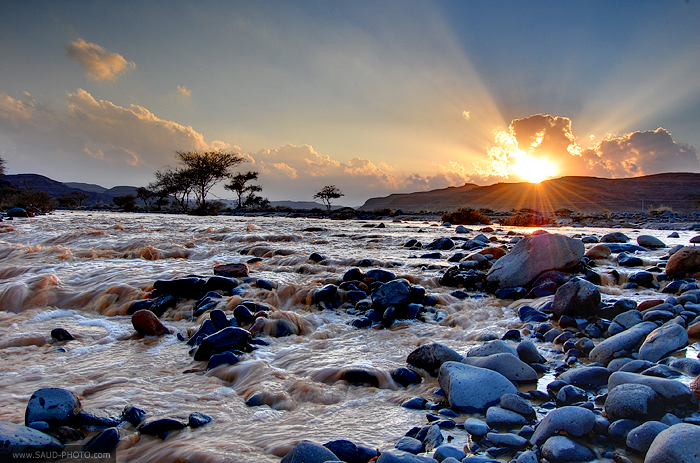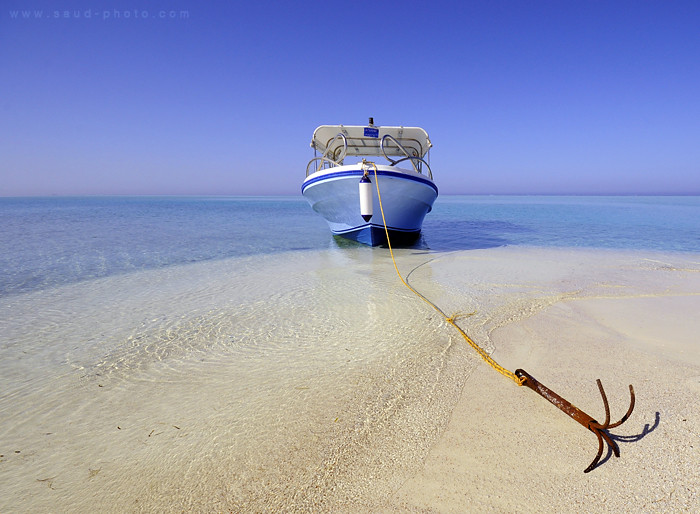Imran Khan
PDF VETERAN

- Joined
- Oct 18, 2007
- Messages
- 68,815
- Reaction score
- 5
- Country
- Location
Meet Saudi Arabia's leading artist, soldier, and 'rock star'
Katie Razzall Reporter
Imagine a lieutenant-colonel in the Saudi Arabian army. Now imagine a conceptual artist from the same country. Put them together and you get Abdulnasser Gharem, who has his first big show in London.
Described by Rolling Stone magazine as the "rock star" of Saudi art, Abdulnasser Gharem has his first major solo show, perhaps not surprisingly, not in the Gulf state but in London at the Edge of Arabia gallery.
His work aims to inspire people to question and challenge authority, to think beyond what they have always been told. It is courageous stuff, but subtle enough to avoid being antagonistic.
This Saudi is hoping to bring change to his country and the wider Middle East from within.
I found him dressed in white robes and checked keffiyeh, marker pen in hand, putting the final touches to his paintings on the gallery walls. Included in the show are a series of stamp paintings, so-called because he's covered plywood boards in thousands of rubber stamp letters. They are a kind rarely used in Britain, but still employed across the Arab world as a seal of bureaucratic approval.
The stamp is everything, Mr Gharem told me: "Without it, you don't exist. It's your life, from the beginning when you are born and even when you go on vacation, you have to have a stamp."
What I'm doing is to show people their issues, change should come from them. Abdulnasser Gharem

Painted on these thousands of rubber stamp letters are huge pictures depicting images that Mr Gharem says illustrate the hypocrisies of which we are all guilty. But hidden within them are words and phrases Mr Gharem didn't want the Saudi censors to see. So it is only once they arrive in London that he highlights them using his pen.
"There are messages in here, but we have to reveal them once they're in the gallery," he told me.
He colours in the rubber, back-to-front letters to reveal: "We should close this bloody chapter of history" and "The battle for the future of the Muslim world".
His stamp painting of a real road sign on the route to Mecca shows a lane for Muslims and a turn off the road for non-Muslims. He has hidden "Islamophobia" in the picture too, a word he says he hears often on the lips of politicians and religious leaders in the Middle East who complain about the treatment of Muslims. But he turns that idea on its head too, highlighting the phobia of non-Muslims by believers who won't even let them stay on the road to Mecca.


(Abdulnasser Gharem: Flora and Fauna, 2007. Courtesy the artist and Edge of Arabia)
His art condenses complex ideas into simple ones. Camouflage shows a tank firing out a geometric flower, the whole painting decorated with both Sunni and Shia imagery. He's careful not to blame Islam for violence but says people use it as an excuse. He wants his art to start a dialogue about what future people want, but accepts this picture couldn't be shown in Saudi Arabia right now: "It's not the right time, people are not yet ready to let you tell your vision."
Abdulnasser Gharem works across mediums. When he started out, Saudi Arabia was an art-free zone, with few galleries and no art schools, so he took his art to the streets. An early work called Flora and Fauna saw him wrap himself up in plastic sheeting with one of the newly planted trees that lined the roadside. Visitors to the gallery can watch what happened on film. Mr Gharem survived in his cocoon thanks to the oxygen produced by the tree. It was a comment on drought and the environmental damage being caused by rapid development.
"People thought I was crazy. They didn't expect me, an army guy, a guy from a tribe, to go to the main street like that," he says.
The Saudi contemporary art scene has changed a lot since then. Two years ago, Mr Gharem became the Arab world's highest-value living artist when his installation, Message/Messenger, sold for $842,500. It's a golden dome, inscribed with "guide us to the right path", rigged up to look like an animal trap. He says it is a comment on the post-September 11 world.

(Abdulnasser Gharem: Message/Messenger, 2010, Installation of wood and copper. Courtesy the artist and Edge of Arabia)
Those attacks on America in 2001 loom large in personal terms for Mr Gharem. Two of the men involved were in his class at school.
"I knew them very well. They were my friends, we were sitting together. I didn't know they would do that. They changed, in a month or two, they were brainwashed through the internet," Gharem told me.
And in his painting In Transit - Fighter, of an American bomber plane decorated with Islamic geometry, if you look closely you'll find a stamp letter of an email message icon, a pointer, he says, to the fact that al-Qaeda use this medium to spread their ideology to young people. They use the internet in a way to create these troubles now, he says.
The internet was how the soldier learnt about art. He poured over it, discovering galleries, artists, ideas. He then took what he found and has created his own, Saudi Arabian take on contemporary art. Probing, questioning, he sees his mission to create a spark so that people will talk, and decide what they want the future to look like.
But he rejects the idea that change won't happen. He lives in a country where Wahhabi fundamentalism still rules, the only place in the world where women are forbidden from driving.
"It's going to come," he tells me, pointing to the fact that women have recently been given positions on King Abdullah's advisory council and have acquired leading positions in government.
But he doesn't see it as his role to be more vocal to force the pace of change: "What I'm doing is to show people their issues, change should come from them. Why should I force it, if they're not ready?"
Abdulnasser Gharem will be at Edge of Arabia from 9 October - 8 November 2013, www.edgeofarabia.com

http://www.thenational.ae/arts-culture/art/saudi-army-officers-post-9-11-art-metaphor
Katie Razzall Reporter
Imagine a lieutenant-colonel in the Saudi Arabian army. Now imagine a conceptual artist from the same country. Put them together and you get Abdulnasser Gharem, who has his first big show in London.
Described by Rolling Stone magazine as the "rock star" of Saudi art, Abdulnasser Gharem has his first major solo show, perhaps not surprisingly, not in the Gulf state but in London at the Edge of Arabia gallery.
His work aims to inspire people to question and challenge authority, to think beyond what they have always been told. It is courageous stuff, but subtle enough to avoid being antagonistic.
This Saudi is hoping to bring change to his country and the wider Middle East from within.
I found him dressed in white robes and checked keffiyeh, marker pen in hand, putting the final touches to his paintings on the gallery walls. Included in the show are a series of stamp paintings, so-called because he's covered plywood boards in thousands of rubber stamp letters. They are a kind rarely used in Britain, but still employed across the Arab world as a seal of bureaucratic approval.
The stamp is everything, Mr Gharem told me: "Without it, you don't exist. It's your life, from the beginning when you are born and even when you go on vacation, you have to have a stamp."
What I'm doing is to show people their issues, change should come from them. Abdulnasser Gharem

Painted on these thousands of rubber stamp letters are huge pictures depicting images that Mr Gharem says illustrate the hypocrisies of which we are all guilty. But hidden within them are words and phrases Mr Gharem didn't want the Saudi censors to see. So it is only once they arrive in London that he highlights them using his pen.
"There are messages in here, but we have to reveal them once they're in the gallery," he told me.
He colours in the rubber, back-to-front letters to reveal: "We should close this bloody chapter of history" and "The battle for the future of the Muslim world".
His stamp painting of a real road sign on the route to Mecca shows a lane for Muslims and a turn off the road for non-Muslims. He has hidden "Islamophobia" in the picture too, a word he says he hears often on the lips of politicians and religious leaders in the Middle East who complain about the treatment of Muslims. But he turns that idea on its head too, highlighting the phobia of non-Muslims by believers who won't even let them stay on the road to Mecca.


(Abdulnasser Gharem: Flora and Fauna, 2007. Courtesy the artist and Edge of Arabia)
His art condenses complex ideas into simple ones. Camouflage shows a tank firing out a geometric flower, the whole painting decorated with both Sunni and Shia imagery. He's careful not to blame Islam for violence but says people use it as an excuse. He wants his art to start a dialogue about what future people want, but accepts this picture couldn't be shown in Saudi Arabia right now: "It's not the right time, people are not yet ready to let you tell your vision."
Abdulnasser Gharem works across mediums. When he started out, Saudi Arabia was an art-free zone, with few galleries and no art schools, so he took his art to the streets. An early work called Flora and Fauna saw him wrap himself up in plastic sheeting with one of the newly planted trees that lined the roadside. Visitors to the gallery can watch what happened on film. Mr Gharem survived in his cocoon thanks to the oxygen produced by the tree. It was a comment on drought and the environmental damage being caused by rapid development.
"People thought I was crazy. They didn't expect me, an army guy, a guy from a tribe, to go to the main street like that," he says.
The Saudi contemporary art scene has changed a lot since then. Two years ago, Mr Gharem became the Arab world's highest-value living artist when his installation, Message/Messenger, sold for $842,500. It's a golden dome, inscribed with "guide us to the right path", rigged up to look like an animal trap. He says it is a comment on the post-September 11 world.

(Abdulnasser Gharem: Message/Messenger, 2010, Installation of wood and copper. Courtesy the artist and Edge of Arabia)
Those attacks on America in 2001 loom large in personal terms for Mr Gharem. Two of the men involved were in his class at school.
"I knew them very well. They were my friends, we were sitting together. I didn't know they would do that. They changed, in a month or two, they were brainwashed through the internet," Gharem told me.
And in his painting In Transit - Fighter, of an American bomber plane decorated with Islamic geometry, if you look closely you'll find a stamp letter of an email message icon, a pointer, he says, to the fact that al-Qaeda use this medium to spread their ideology to young people. They use the internet in a way to create these troubles now, he says.
The internet was how the soldier learnt about art. He poured over it, discovering galleries, artists, ideas. He then took what he found and has created his own, Saudi Arabian take on contemporary art. Probing, questioning, he sees his mission to create a spark so that people will talk, and decide what they want the future to look like.
But he rejects the idea that change won't happen. He lives in a country where Wahhabi fundamentalism still rules, the only place in the world where women are forbidden from driving.
"It's going to come," he tells me, pointing to the fact that women have recently been given positions on King Abdullah's advisory council and have acquired leading positions in government.
But he doesn't see it as his role to be more vocal to force the pace of change: "What I'm doing is to show people their issues, change should come from them. Why should I force it, if they're not ready?"
Abdulnasser Gharem will be at Edge of Arabia from 9 October - 8 November 2013, www.edgeofarabia.com

http://www.thenational.ae/arts-culture/art/saudi-army-officers-post-9-11-art-metaphor




 Not only Jeddah but across KSA.
Not only Jeddah but across KSA.




